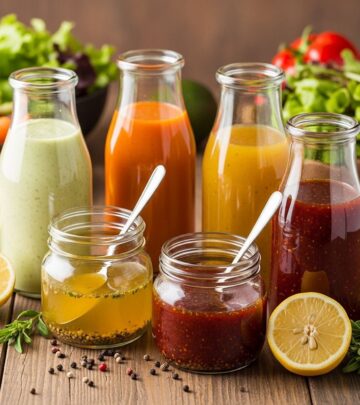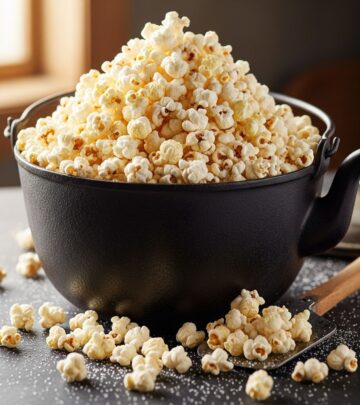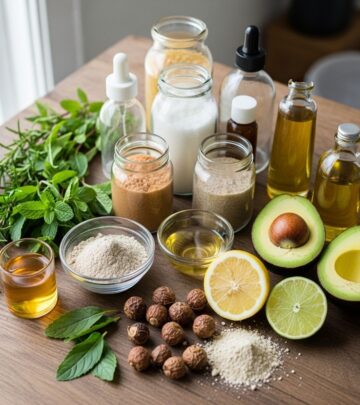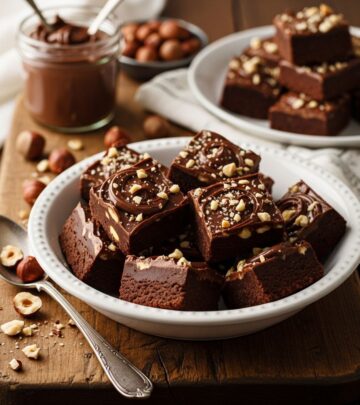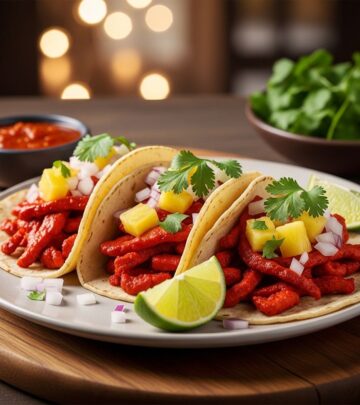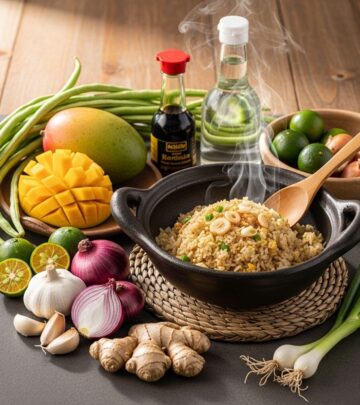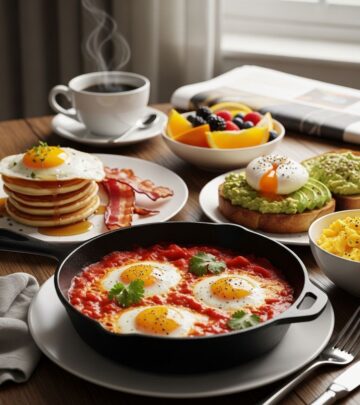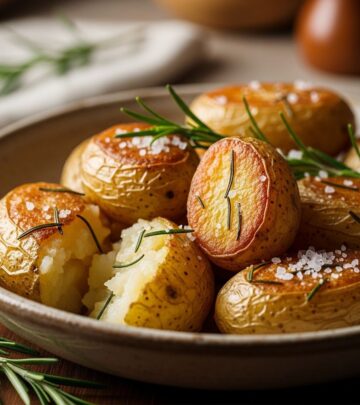Jewish Recipes: 15 Timeless Classics To Make Your Bubbe Proud
Discover traditional Jewish dishes that connect generations through timeless flavors
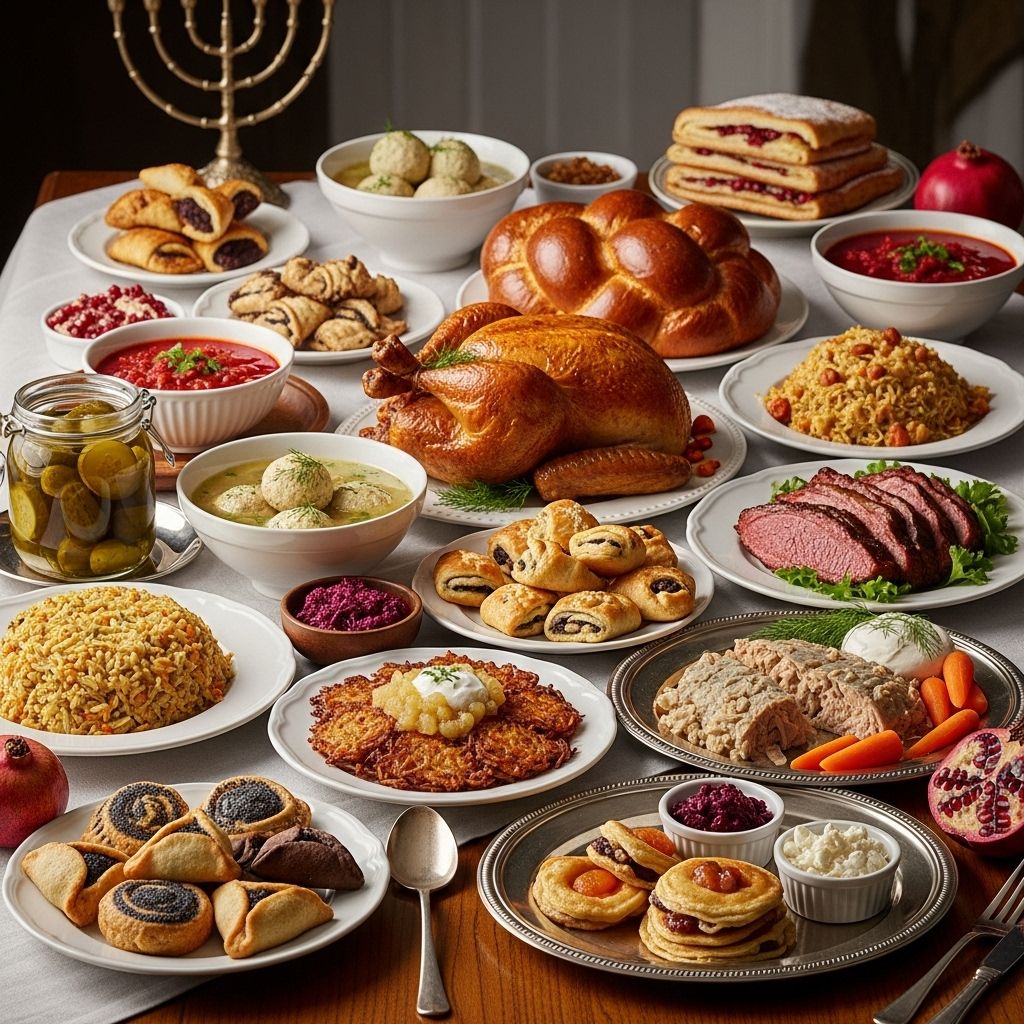
Image: HearthJunction Design Team
15 Classic Jewish Recipes To Make Your Bubbe Proud
There’s something profoundly special about Jewish cooking that transcends mere sustenance. These dishes carry centuries of tradition, stories of survival, and the warmth of family gatherings across generations. Whether you grew up watching your grandmother (bubbe) prepare these classics or you’re exploring Jewish cuisine for the first time, these recipes connect us to a rich cultural heritage that has withstood the test of time.
Jewish food traditions vary widely depending on whether they come from Ashkenazi (Eastern European) or Sephardic (Mediterranean and Middle Eastern) backgrounds. What unites them is their adherence to kosher principles and their ability to transform simple ingredients into something extraordinary. Many of these dishes emerged from necessity during times of hardship, yet they’ve become beloved comfort foods that continue to bring families together.
Let’s explore fifteen classic Jewish recipes that would make any bubbe beam with pride. Each recipe carries not just flavors, but memories and cultural significance that deserve to be preserved and celebrated.
Comforting Soups and Starters
1. Matzoh Ball Soup: The Jewish Penicillin
No Jewish recipe collection would be complete without matzoh ball soup. Often called “Jewish penicillin” for its reputed healing properties, this chicken soup with fluffy matzoh dumplings is the ultimate comfort food. The secret to perfect matzoh balls lies in their texture—some prefer them dense and sinkers, while others aim for light and fluffy floaters.
The base is a golden chicken broth made rich by slow-simmering with carrots, celery, onions, and fresh herbs. The matzoh balls themselves are a simple mixture of matzoh meal, eggs, schmaltz (chicken fat), and seasonings. While traditionally served during Passover, this soul-warming soup appears year-round on Shabbat tables and whenever someone feels under the weather.
2. Beautifully Braided Challah
Challah is more than just bread—it’s an edible work of art that graces Jewish tables every Shabbat and holiday. This enriched dough contains eggs, oil, and sometimes a touch of honey for sweetness. The signature glossy golden exterior comes from an egg wash applied before baking.
What makes challah truly special is its intricate braiding, traditionally done with six strands to represent the six days of the week (with Shabbat being the seventh day of rest). The process of braiding challah is often meditative, a moment to reflect on the week past and the sacred time ahead. Breaking bread together by tearing the challah rather than cutting it symbolizes unity and connection.
3. Flaky Borekas
Borekas (also spelled burekas or börek) showcase the Sephardic influence in Jewish cuisine. These savory pastries feature flaky dough wrapped around fillings like spinach and cheese, potato, or mushroom. The half-moon or triangular shapes are not just beautiful but practical, as different shapes traditionally indicate different fillings.
The dough can be made with puff pastry for extra flakiness or with a more traditional oil-based dough. What makes borekas special is their versatility—they work as appetizers, snacks, or part of a larger mezze spread. Many families have their own special recipes passed down through generations, with subtle variations that make each version unique.
Main Dishes That Satisfy
4. Hearty Brisket
Perhaps no dish epitomizes Jewish cooking more than a slow-cooked brisket. This humble cut of beef becomes transcendent when braised for hours with onions, carrots, and a touch of sweetness from ingredients like tomatoes or prunes. The magic happens in the slow transformation of a tough cut into meat so tender it practically melts.
What makes Jewish brisket special is its balance of sweet and savory flavors. Unlike its Texas BBQ cousin, Jewish brisket is braised rather than smoked, resulting in a fork-tender dish surrounded by rich gravy. It’s typically prepared for special occasions like Rosh Hashanah (Jewish New Year) or Passover, though many families find any excuse to enjoy this comforting classic.
5. Savory Kugel
Kugel is essentially a baked pudding or casserole that comes in countless variations. While sweet noodle kugel with raisins and cinnamon is popular, savory versions hold equal importance in Jewish cuisine. Potato kugel, with its crispy exterior and creamy interior, is a particular favorite, especially during Passover when noodles aren’t permitted.
The beauty of kugel lies in its adaptability. It can incorporate vegetables like broccoli or spinach, be made dairy with the addition of cheese, or remain pareve (neither meat nor dairy) to accompany any meal. No matter the variation, kugel represents the Jewish tradition of transforming simple ingredients into something greater than the sum of its parts.
6. Classic Stuffed Cabbage (Holishkes)
Stuffed cabbage rolls, known as holishkes or prakas in Yiddish or golubtsi in Russian Jewish communities, showcase the Ashkenazi talent for stretching ingredients during lean times. Cabbage leaves are blanched until pliable, then wrapped around a filling of ground meat, rice, and seasonings before being cooked in a sweet-and-sour tomato sauce.
What makes Jewish stuffed cabbage unique is its balance of sweet and sour flavors, often achieved with brown sugar and lemon juice or vinegar. The dish is traditionally served for Sukkot (the harvest festival) as the stuffed rolls symbolize abundance, but they appear year-round as a hearty main course that feeds many from relatively few ingredients.
Side Dishes with Character
7. Crispy Latkes
These potato pancakes are the star of Hanukkah celebrations, commemorating the miracle of oil that burned for eight days. While the basic recipe calls for grated potatoes, onions, eggs, and matzo meal, debate rages about the best technique: hand-grating versus food processor, wringing out moisture versus leaving some in, frying in schmaltz versus oil.
What makes the perfect latke is subjective—some prefer them shredded and lacy, while others aim for a smooth interior with crispy edges. They’re traditionally served with applesauce and sour cream, representing the dual nature of the Hanukkah story. Though associated with the Festival of Lights, many Jewish families enjoy these crispy delights year-round.
8. Tzimmes
Tzimmes is a sweet vegetable stew typically made with carrots, sweet potatoes, and dried fruits like prunes or apricots. The name comes from the Yiddish word “tzim” (for) and “esn” (to eat), but has also entered everyday Yiddish as meaning “a big fuss” – perhaps because of the effort traditionally put into making it.
What makes tzimmes special is its symbolic nature, particularly for Rosh Hashanah when sweet dishes represent hopes for a sweet new year. The carrots, when sliced into rounds, resemble coins and symbolize prosperity. The slow cooking process allows the flavors to meld beautifully, creating a dish that’s greater than the sum of its simple parts.
9. Kasha Varnishkes
This hearty combination of buckwheat groats (kasha) and bow-tie pasta (varnishkes) might seem like an unlikely pairing, but it’s a beloved comfort food in Ashkenazi cuisine. The nutty flavor of the toasted buckwheat complements the pasta, while caramelized onions add sweetness and depth.
What makes kasha varnishkes special is its satisfying texture and earthy flavor profile. The dish represents the ingenuity of Jewish cooks who created filling, nutritious meals from affordable ingredients. Though humble, it’s a dish that evokes deep nostalgia for many Jewish families and continues to appear on tables as a side dish or vegetarian main.
Delightful Desserts
10. Rugelach
These crescent-shaped pastries feature a cream cheese dough wrapped around fillings like chocolate, nuts, cinnamon, or fruit preserves. The name comes from Yiddish, meaning “little twists” or “little corners.” While they require some effort to make, the results are irresistible—flaky, not too sweet, and perfect with tea or coffee.
What makes rugelach special is their versatility and the way they balance richness with restraint. Unlike many American cookies, rugelach aren’t overwhelmingly sweet, allowing the filling flavors to shine. They’re particularly popular during Hanukkah but are enjoyed year-round as a beloved treat that connects generations through shared recipes.
11. Babka
This twisted bread-cake hybrid features layers of dough interspersed with fillings like chocolate, cinnamon, or fruit. The dough is rolled out, spread with filling, then rolled up and twisted to create the characteristic swirled interior. The name comes from the Polish word for “grandmother,” highlighting its homemade origins.
What makes babka special is its striking appearance and perfect balance of bread-like and cake-like qualities. Modern versions often feature chocolate, but traditional variations included cinnamon, nuts, and dried fruits. Recently experiencing a renaissance in popularity, babka connects traditional Jewish baking with contemporary tastes.
12. Hamantaschen
These triangular cookies filled with poppy seeds, fruit preserves, or chocolate are the signature treat of Purim. Their three-cornered shape supposedly represents the hat (or ears, depending on the interpretation) of Haman, the villain of the Purim story. Making these cookies is often a family activity, with everyone pitching in to fold the dough around the fillings.
What makes hamantaschen special is their symbolic nature and the way they connect Jewish families to their heritage through food. While traditionally filled with poppy seeds (representing the hidden nature of God in the Purim story), modern variations include everything from chocolate to savory fillings like mushroom or cheese.
Preserving Tradition in Modern Times
13. Gefilte Fish
Perhaps the most polarizing of Jewish foods, gefilte fish consists of ground fish (usually carp, pike, or whitefish) formed into oval shapes and poached. Traditionally made to observe the prohibition against separating bones from fish on Shabbat, it’s now a staple appetizer for holidays, served cold with horseradish.
What makes gefilte fish special is its deep connection to Ashkenazi history and the way it represents making something special from humble ingredients. While many joke about their distaste for the jarred variety, homemade gefilte fish—or modern interpretations by innovative Jewish chefs—reveals the dish’s true potential and cultural significance.
14. Shakshuka
This North African dish of eggs poached in a spiced tomato sauce has become increasingly popular in Israeli and Jewish cuisine. Representing Sephardic and Mizrahi traditions, shakshuka offers a welcome counterpoint to the Eastern European dishes that often dominate Jewish food discussions in America.
What makes shakshuka special is its vibrant flavors and adaptability. The basic version includes tomatoes, peppers, onions, and spices like cumin and paprika, but countless variations exist. Served straight from the pan with crusty bread for dipping, it’s perfect for breakfast, brunch, or a light dinner, demonstrating how Jewish cuisine continues to evolve and incorporate diverse influences.
15. Mandelbrot
Often called “Jewish biscotti,” mandelbrot (literally “almond bread”) are twice-baked cookies featuring nuts and sometimes dried fruit. The dough is formed into a log, baked, sliced, and then baked again to achieve the characteristic crunch that makes them perfect for dipping in coffee or tea.
What makes mandelbrot special is their longevity—both in how well they keep and in their enduring popularity across generations. Less sweet and often more tender than Italian biscotti, they represent the Jewish knack for creating long-lasting treats that could be enjoyed throughout the week, minimizing waste and maximizing resources.
Frequently Asked Questions
Q: What makes food kosher?
A: Kosher food adheres to Jewish dietary laws (kashrut) which include separating meat and dairy, only consuming certain animals (like cows and chickens but not pigs or shellfish), and ensuring proper slaughter methods. Foods are categorized as meat, dairy, or pareve (neutral, neither meat nor dairy).
Q: Why do many Jewish recipes seem labor-intensive?
A: Many traditional Jewish dishes were developed for Shabbat and holidays when work is prohibited. Dishes were created that could be prepared ahead and either served cold or kept warm without active cooking. The labor represents an investment of love and preparation for sacred time.
Q: Are all Jewish recipes Ashkenazi (Eastern European)?
A: No, Jewish cuisine is remarkably diverse, reflecting the global diaspora. Sephardic (Mediterranean/Middle Eastern) and Mizrahi (Middle Eastern/North African) Jewish cuisines feature different ingredients and techniques. Israeli cuisine combines elements from all these traditions plus local influences.
Q: How can I adapt traditional recipes for modern dietary needs?
A: Many Jewish recipes can be adapted for gluten-free, vegetarian, or other dietary needs. For example, vegetable broths can replace chicken stock in matzoh ball soup, gluten-free matzoh meal exists for Passover recipes, and olive oil can substitute for schmaltz (chicken fat) in many applications.
Q: What’s the significance of food in Jewish culture?
A: Food in Jewish tradition goes beyond sustenance—it’s a vehicle for memory, connection to history, and religious observance. Many dishes have symbolic meanings tied to holidays and values. The act of preparing traditional foods connects generations and preserves cultural heritage even as other aspects of identity may evolve.
References
- https://www.youngwriterssociety.com/viewtopic.php?f=62&t=109644&p=1422212
- https://catrionanutritionblog.com/tag/jewish-diet/
- https://www.etowntog.com/viewtopic.php?t=559&sid=b2ee7ffe8963532adc865d042627cd5a
- https://wizardofvegas.com/forum/gambling/craps/36080-defeating-the-25-table-minimum/5/
- https://socialsearch.com/Search?search=Jewish+Food
Read full bio of Shinta

